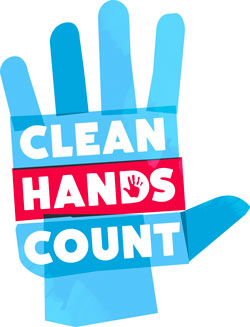Washing hands is one of the simplest steps to good health. Washing hands with soap and water is a and the best way to get rid of germs including virus , bacteria and fungi that may be present on surfaces that you touch and come in contact with. It is the best, simplest and most inexpensive way to prevent people, especially children from falling sick.
In the current scenario, with the scare created by the global coronavirus pandemic, the simple process of hand washing goes a long way in keeping people healthy and safe.
Let us understand how we pick up micro-organisms.
Normal bacterial flora on the hands can be categorized as resident or transient
The resident flora of the skin comprise of microorganisms that colonize below the superficial cells of the stratum corneum and can be found on the skin surface. This includes the Staphylococcus epidermidis predominantly. Other resident organisms include S. hominis, other coagulase negative staphylocci a,d Corynebacterium species organisms, and certain types of fungi of the Pityrosporum species. These resident microorganisms play an important protective role as microbial antagonists. They protect the skin and are less likely to cause infections.
The transient flora are those present on the superficial layers of the skin especially the epidermis.. These transient organisms are acquired by contact with patients, contaminated surfaces and objects, fecal matter as from diapers, infected respiratory secretions in the air etc. These may be pathogenic organisms like Staphylococcus aureus, gram negative bacilli, yeast etc. These are more likely to be removed by routine hand hygiene measures
Important occasions to wash your hands
- Before, during and after preparing food
- Before eating food
- Before and after caring for someone at home who is sick with vomiting or diarrhea
- Before and after treating a cut or a wound
- After using the toilet
- After blowing your nose, coughing or sneezing
- After changing the diapers or cleaning up a child who has used the toilet
- After touching an animal, animal feed or animal waste
- After handling pet foods or pet treats
- After touching garbage
- Before touching your face, eyes, nose ,ears etc.
- After shaking hands
Seven steps to good hand hygiene
There are seven steps that are recommended to be followed whenever you wash your hands. This will ensure that the microorganisms are removed almost completely from all areas of the hands.
-wet hands-rub palms together-rub back of the hands-interlink your fingers-cup your fingers-rub your palms with your fingers
Wash your hands with soap and water as often as possible, and especially when you find the hands are visibly dirty
However, it may not be possible to follow all these steps each and every time. Washing the hands with soap and water for at least 20 seconds, and then drying them completely is adequate to remove contaminants.
What can be done if water is not available?
In case of non availabilty of water, hand sanitizers may be used.
Those containg at least 60% alcohol are adequate to clean the skin flora.
However , please remember the following:
Hand sanitizers do NOT remove all kinds of germs from the hands
Hand sanitizers are NOT useful to remove harmful chemicals and pesticides from the skin
Hand sanitizers are NOT useful when the hands are visibly dirty or greasy.
How to use hand sanitizers correctly?
Place some of the sanitizer gel on one palm and rub the hands together.
Rub the gel over all surfaces of the hands and fingers until your hands are dry. This may take around 20 seconds.
GLOBAL HANDWASHING DAY is celebrated on Oct 15 of each year. This is an important day as it helps to improve the awareness ,benefits and knowledge of hand washing with soap at home, in the community as well as globally around the world.

